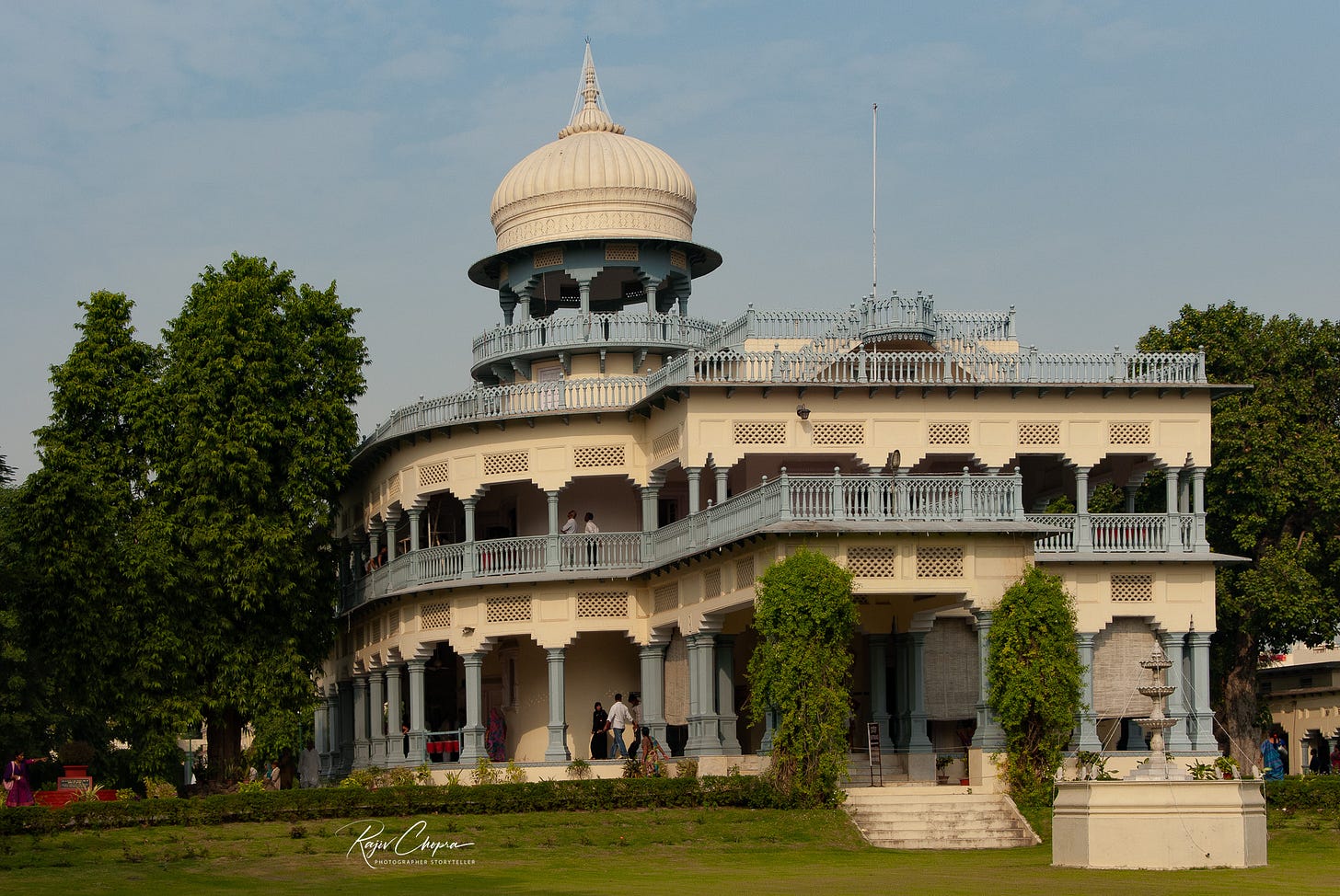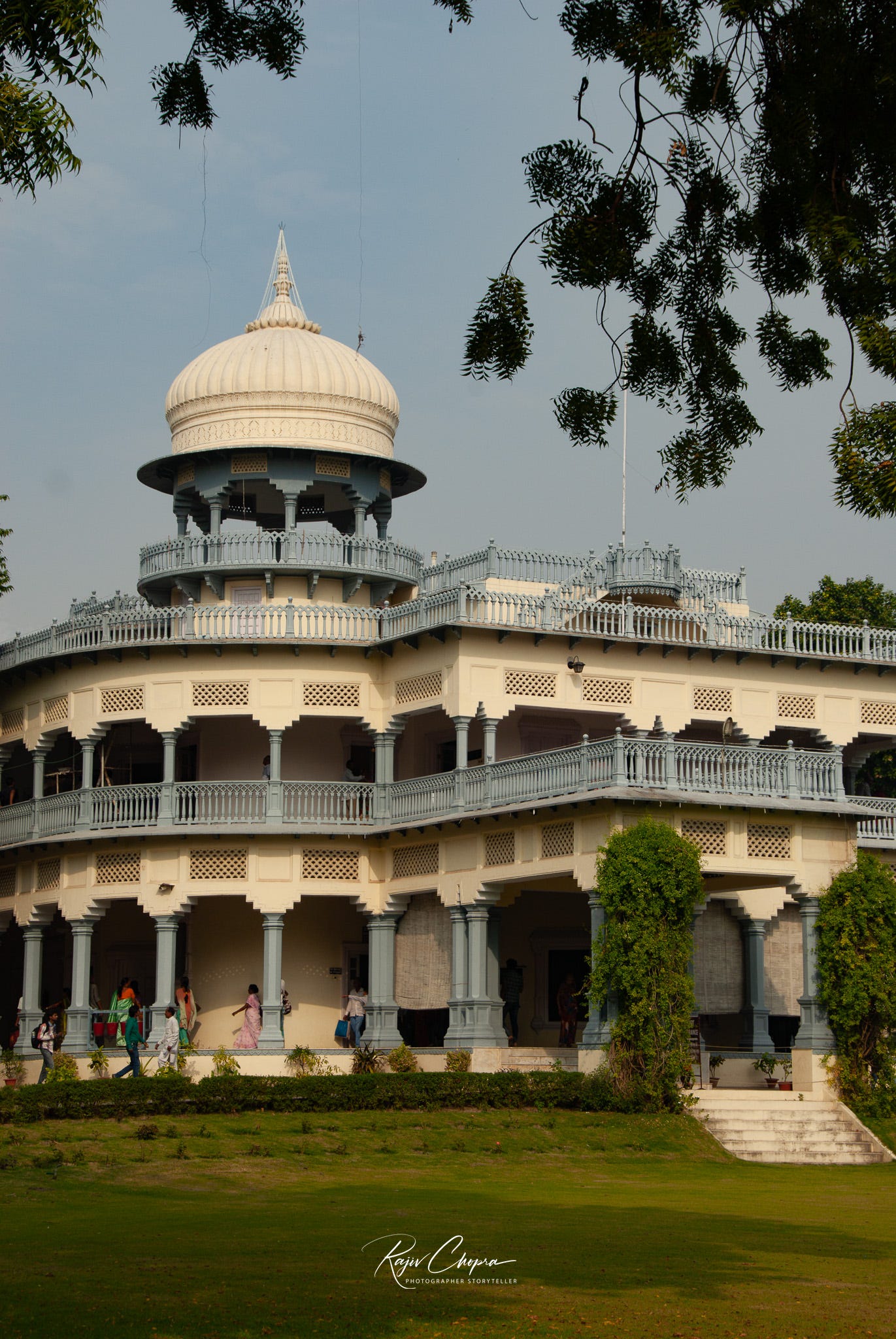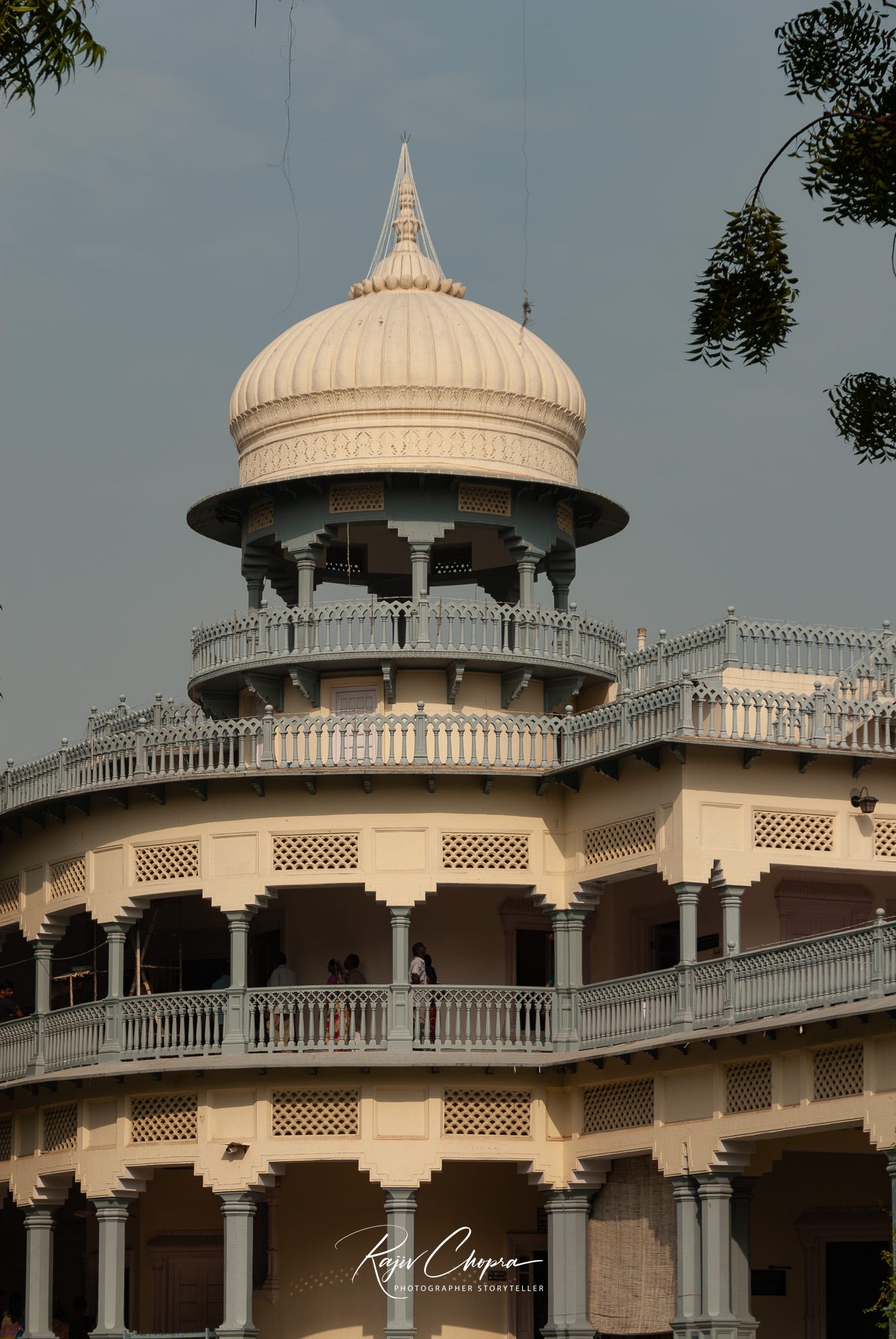Why is Anand Bhawan so important to India?
It was here that the leaders of the time held many discussions about India's freedom.
Adolescent memories of Allahabad and the discussions we had.
Humans are strange. I consider myself stranger than most people. You may have the impression that I intend to launch into a dissertation on why people are strange and why I am crazy, but I won’t.
When I was twelve, the Army transferred my father to a small village called Chheoki. He was in charge of the Ordnance Depot and Factory and was the Commandant of the Ordnance Depot – the COD.
My sister went to school in Allahabad, and I used to visit Chheoki for the winter holidays. The winter holidays were beautiful. We had a large lawn in front of our bungalow, and I adopted the cud-chewing habits of our bovine relatives. I sat out on the lawn all day, reading a book, emerging late evening to play with my friends.
The sky was blue those days, quite unlike India’s situation today, when we are home to 75 of the world’s top 100 most polluted towns.
The Yamuna River separated us from Allahabad, and sometimes we’d drive across in my father’s official Ambassador car to meet my cousin’s in-laws. They lived in Allahabad Cantonment, ran a law book publishing business, and were urbane, sophisticated, and gracious people.
I have proof of their graciousness. The Yamuna and Ganges Rivers meet at Allahabad, and we refer to the point where the Yamuna joins the Ganga as the Sangam or Prayag. I will return to the Sangam in a later blog post. Once, during dinner, my hosts suggested I bathe in the Ganges to wash away my sins. They insisted the river would purify me, and a daily bath in the holy waters was an excellent way to live a life free from sin.
I’ve always been a rebel, but I wasn’t aware of the early signs of my rebelliousness. When they spoke of the river’s purifying properties, I challenged them, saying that I could murder someone daily, and then dive into the Ganges to absolve myself and, once absolved, no court in India could pronounce me guilty of a crime. Then, I challenged them to reconcile law and faith. Remember, I was thirteen at the time, and maybe that was why they let me off the hook with an embarrassed laugh.
Despite my tendency to rebel, I had many excellent conversations with them, and always enjoyed their gracious, urbane hospitality. My hosts would be out of place in present-day India.
Anand Bhawan.
They mentioned Anand Bhawan and informed me that it was Jawaharlal Nehru’s old hom
e and that Indira Gandhi grew up there. I vaguely became aware that the building was massive and stately, and promptly labelled Indira Gandhi as being a spoilt brat. Around that time, a rumor circulated that Indira Gandhi had a plastic nose, and when school authorities in my school in Nainital asked us to line the road for her visit, we strained to spot the plastic part of her nose. We grumbled like the petulant schoolboys we were when we discovered her nose was typical, with no hint of plastic or surgery.
I travelled to Allahabad many times after we left Chheoki, and always for work. My only interest in Allahabad was in settling distributor disputes and increasing sales of my products—the end. You will encounter many people like my past self, with a narrow worldview, only interested in expanding business and improving their personal wealth.
The short lesson from this long tale is that we are often oblivious to our history and do not take the time to explore and understand the city we live in. The busyness of our daily routines makes it impossible for us to stretch our necks and explore our city or its history.
While planning our Benares trip, my friend and I added Allahabad to our itinerary, and I am glad we visited the city because I discovered aspects of Allahabad that I had been blind to until then.
Why is Anand Bhawan such a historic building?
At the time of writing, Anand Bhawan is close to a century old, a testament to Motilal Nehru’s perfectionism. I confess to being very impressed with the design and construction. A beautiful lawn stands in front of the main building, and anyone walking in to meet the Nehrus cannot fail to be impressed. If Anand Bhawan had not been the hub of many activities and meetings during India’s struggle for independence, I would have doubled down on my earlier sentiment that she was a spoiled brat.
In different circumstances, I can visualize Indira sitting in the lawn with a bunch of maids and manservants hovering around her, trying their best to be invisible while still on hand. I know the feeling of trying to be invisible but being available at the drop of a kerchief. Henry Kravis and his buddies visited India for a holiday when I was younger, and my boss put me in charge of the Jaipur leg of their trip. Henry Kravis and his crew were rich, obnoxious people, prompting imagery of the colonizing and patronizing Brits to float in my imagination. My team and I had to be invisible, yet constantly available, masking our irritation with a show of obsequiousness.
The Nehru family was anglicized, but when Jawaharlal Nehru returned from Europe, he was a changed man. As the Independence movement progressed, he shifted from Western clothes to khadi and threw himself into India’s struggle for independence. Jawaharlal was not Gandhi’s first choice for the Congress President, but Motilal Nehru was a forceful man, and his will prevailed. I don’t think anyone then could have predicted that the Nehru-Gandhi (not MK Gandhi) family would take control of the Congress party, a legacy that has now become its bane.
The government has converted Anand Bhawan into a museum, and as you walk the stairs and corridors and peer into the rooms, awe must overtake you. These are the rooms where people like Nehru, Gandhi, Vallabhai Patel, possibly Jinnah, and a bunch of other luminaries to whom we owe our freedom sat, discussed, and debated the next steps.
From Kushak to Anand Bhawan
We did not visit ‘Kushak,’ the original home that Motilal Nehru built in 1925. ‘Kushak’ means ‘hut,’ a humorous (it seems) statement that Motilal Nehru made to the world. When their luxurious lifestyle became a point of controversy, Motilal donated the building to the Indian National Congress and renamed it ‘Swaraj Bhawan.’ Then, he built the slightly smaller ‘Anand Bhawan’ next to the original building, making me wonder at the opulence of ‘Kushak.’
Anand Bhawan was the nerve center of India’s independence movement, and all the people whose names I mentioned met here to discuss what to do next.
Anand Bhawan was also the crucible, or birthplace, of the Nehru-Gandhi dynasty and its control over the Indian National Congress. This dominance has now become the proverbial albatross around the party’s neck. Many Congress (and even BJP) supporters, like me, believe it is time for fresh leadership to infuse the party with life and energy.
The discussions at Anand Bhawan had one more effect, or so I understand. The Independence movement transitioned from a movement limited by petitions to a mass movement.
Maybe you will reassess your possibly negative opinion of Nehru.
When walking around Anand Bhawan, a few observations came to mind. One is the obvious – the centrality of Nehru’s home to India’s Independence movement.
Second, even if you consider Indira Gandhi privileged (many historians believe she was lonely), you cannot deny the in-depth political training she received at home, which may have planted the seeds for her future incarnation as a consummate political player.
Third, you will admire the building’s architecture and interior design, both of which will give you some insight into the evident sophistication of the Nehru family.
Fourth, you may reflect upon the poverty of our knowledge of modern Indian history. You may also reflect on the transience of adulation. Today, many Indians adore the incumbent, much as they adored Nehru in the decades leading up to his death. Today’s politicians remain obsessed by Nehru’s legacy, abusing him at every opportunity. Citizens who continue to graduate from the WhatsApp University join the abusive chorus. A moment’s reflection should give those in power cause for worry. People worship Modi today, and this worship can easily become hatred in the coming decades.
Nehru shed his privileged lifestyle, plunging into the cause of India’s independence, courting jail, and plunging into rioting crowds during our Partition, often at significant risk to himself. Compare this behavior and legacy with those of our current politicians, who distance themselves from those they claim to serve and fleece the government’s coffers.
In the end, I hope that a visit to Anand Bhawan will compel you to reassess your current, possibly negative, impression of Nehru. Maybe you will understand that he was a great, though flawed, man. He was not a god, and we must not consider him one. We must acknowledge our debt to the man who fought for our freedom and worked (with Sardar Vallabhai Patel) to convert India from being a collection of kingdoms into a republic. Nehru was one of the men and women who laid the foundation for our country’s future.






